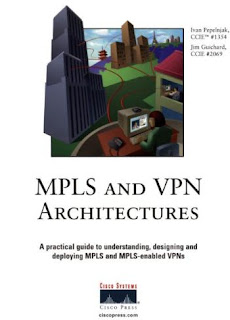
click here for CCIE R & S Lab Information
click here to get all CCIE Study Books
click here for CCIE CBT Nuggets Certification package
click here for CCIE CBT Nuggets Video practice Labs by Jeremy Cioara
click here to download latest CCIE written practice dumps
CCIE-Routing and Switching
Written Exam - #350-001
Cost: US$350
Questions: 90-110 questions
Available Languages: English
CCIE Prerequisites: unlike CCNP there is no prerequisites for CCIE
Register: Pearson VUE
The written exam is a two-hour, multiple choice test with 90-110 questions covering Routing and Switching networking theory related to topics such as IP, IP routing, non-IP desktop protocols, bridging and switch-related technologies, and includes some equipment commands.
Requirements for Certification
There are no formal prerequisites for CCIE certification. Other professional certifications or training courses are not required. Instead, candidates must first pass a written qualification exam and then the corresponding hands-on lab exam.
Update to the CCIE Written Exam Format and Scoring
Effective February 17, 2009, candidates taking CCIE written exams will no longer be allowed to skip a question and come back to it at a later time. In addition, the overall exam score will now be reported on a scale from 300-1000.
Cost
Written exams are administered by independent vendors at cost of US$350. Costs may vary due to exchange rates and local taxes (VAT, GST).
Expiration
Candidates must make an initial attempt of the CCIE lab exam within 18 months of passing the CCIE written exam. Valid passing scores on written exams expire after 18 months.
CCIE ROUTING AND SWITCHING TRACK
Written Exam Blueprint
# General Networking Theory
1. General Routing Concepts
1. Link State and Distance Vector Protocols
2. Split Horizon
3. Summarization
4. Classful and a Classless routing protocol
5. Routing decision criteria
2. Routing Information Base (RIB) and Routing Protocols Interaction
1. Administrative Distance
2. Routing Table
3. RIB and Forwarding Information Base interaction
3. Redistribution
1. Redistribution between routing
2. Troubleshooting routing loop
# Bridging and LAN Switching
1. Spanning Tree Protocol (STP)
1. 802.1d
2. 802.1w
3. 802.1s
4. Loopguard
5. Rootguard
6. Bridge Protocol Data Unit (BPDU) Guard
7. Storm Control
8. Rapid Spanning Tree Protocol (RSTP)
9. Unicast flooding
10. STP port roles, failure propagation and loopguard operation
2. LAN Switching
1. Trunks
2. VLAN Trunking Protocol (VTP) administrative functions
3. Ethernet
1. Speed
2. Duplex
3. Ethernet
4. Fast Ethernet
5. Gigabit Ethernet
# IP
1. Addressing
1. Subnetting
2. Hot Standby Routing Protocol (HSRP)
3. Gateway Load Balancing Protocol (GLBP)
4. Virtual Router Redundancy Protocol (VRRP)
5. Network Address Translation (NAT)
2. Services
1. Network Time Protocol (NTP)
2. Dynamic Host Control Protocol (DHCP)
3. Web Cache Communication Protocol (WCCP)
3. Network Management
1. Logging and Syslog
# IP Routing
1. OSPF
1. Standard OSPF area
2. Stub area
3. Totally stub area
4. Not-so-stubby-area (NSSA)
5. Totally NSSA
6. Link State Advertisement (LSA) types
7. Adjacency on a point-to-point and on a multi-access (broadcast)
8. OSPF graceful restart
9. Troubleshooting failing adjacency formation to fail
10. Troubleshooting of external route installation in the RIB
2. BGP
1. Protocol on which BGP peers communicate
2. Next Hop
3. Peering
4. Troubleshooting of BGP route that will not install in the routing table
3. EIGRP
1. Best path
2. Loop free paths
3. EIGRP operations when alternate loop free paths are available and when it is not available
4. EIGRP queries
5. Manual summarization
6. Auto-summarization
7. EIGRP Stubs
8. Troubleshooting of EIGRP neighbor adjacencies
4. Policy Routing
1. Concept of policy routing
# QoS
1. Modular QoS command-line (MQC) applied to:
1. Network-Based Application Recognition (NBAR)
2. Class-based weighted fair queueing (CBWFQ) / Modified Deficit Round Robin (MDRR)
3. Policing
4. Shaping
5. Marking
6. Random Early Detection (RED)
# WAN
1. Frame Relay
1. Local Management Interface (LMI)
2. Traffic Shaping
3. HUB and Spoke routers
4. Dynamic Multipoint VPN (DMVPN)
5. DE
# IP Multicast
1. Internet Group Management Protocol (IGMP) v2
2. Group addresses
3. Shared Trees
4. Source Trees
5. Protocol Independent Multicast (PIM) Mechanic
6. PIM Sparse Mode
7. Auto-RP
8. Anycast RP
# Security
1. Extended IP access lists
2. Unicast Reverse Path Forwarding (uRPF)
3. IP Source Guard
4. Context Based Access Control (CBAC)
# MPLS (New)
1. Label Switching Router (LSR)
2. Label Switched Path (LSP)
3. Route Descriptor
4. Label Format
5. Label imposition/disposition
6. Label Distribution
# IPv6 (New)
1. IPv6 Addressing and types
2. IPv6 Neighbor Discovery
3. Basic IPv6 functionality protocols
4. IPv6 Multicast and related Multicast protocols
5. Tunneling Techniques
6. OSPFv3
7. EIGRPv6




























